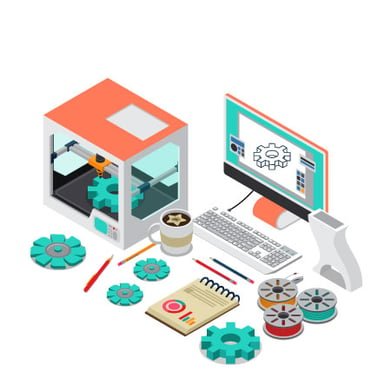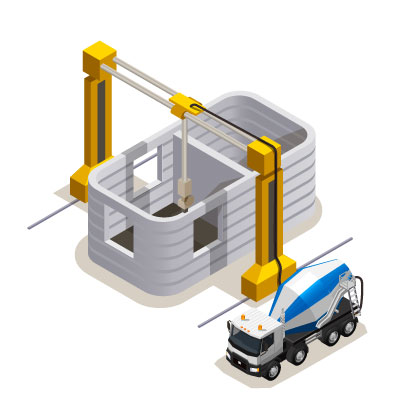Trends in Sustainable Building Design: Strategy for Architectural Firm
The architecture industry is undergoing dramatic changes, with architecture firms adapting to new technologies and changing demands from clients. A recent survey of architecture firm owners found that the most disruptive trend impacting their business is regulation. With global warming becoming more prevalent, architects are being forced to rethink their designs to meet sustainability standards imposed by building codes. All this has led architecture firms to focus their energy on strategies for sustainable design - which also happen to be some of the most efficient strategies for increasing profits!
- architecture trends in the industry due to the changing demands from clients and new technologies
- what is disruptive about global warming on architects
How it impacts their business practices, etc. In summary, this blog post discusses recent developments within both architecture and architectural firms as well as current issues faced by businesses today such as regulation. It also outlines ways in which architecture firm owners can deal with all of this so that they don't lose money while still providing their clients' high-quality services! This blog post isn't very long, but it does a great job of covering all the necessary topics. If you have any questions or would like to discuss this further feel free to reach out to me at support@genotek.global.
 Architecture trends in the industry due to the changing demands from clients and new technologies.
Architecture trends in the industry due to the changing demands from clients and new technologies.
Technology and architecture have always been intertwined. From the first architectural drawings that required a compass to the laser-cutting techniques of today, architecture has taken advantage of new technologies as they became available. As we enter into a new age where architecture is no longer just about buildings but also includes things like urban planning and sustainable design, architecture firms must stay current with trends to be successful. This blog post discusses some important trends in architecture for 2021. The article starts by discussing how changes in demands from clients such as regulation can change what an architect needs to focus on when designing a building or project. There are also discussions about what architects need to know about software tools that are changing how architecture is done, including 3D modeling programs, BIM, and architecture visualization.
Changes in demands to architectural firms from clients such as regulation and climate change.
Changes in architecture and architecture design in the past 10 years have been dramatic. There is a new focus on green architecture, in which architecture and architecture design firms are working to create buildings and structures that do not damage the environment.
There is also an increased focus on architecture design for regulating architecture. Increased regulations in the building industry mean that many architects are having to rethink their practices and find ways to comply with these increased regulations without sacrificing creativity or effectiveness.
Clients such as businesses, government agencies, and private individuals, all have demands for architecture and architecture design services that we need to prioritize. Businesses want cost-effective designs so there's more focus on designing green spaces and eco-friendly offices. Government agencies want sustainable architecture too, which is a growing architecture design trend.
Private clients also have demands for architecture and architecture design services, such as new homes with smart technology or renovations to existing buildings. Not only are the demands changing from current clients but so too is architecture software development happening at an unprecedented rate. We can now build skyscrapers in minutes rather than months thanks to digital tools like BIM (Building Information Modeling). These changes mean that architects will need more training on how to use this new software efficiently and effectively. The future of architecture looks promising indeed!
- Architecture firms need to prioritize client needs when designing green spaces - Increased regulations mean that many architects must rethink their practices - New technologies allow us to create skyscrapers in minutes instead of months - architecture software development is at an unprecedented rate
-businesses want cost-effective designs -government agencies seek sustainable architecture -private clients have demands for architecture and architecture design services, such as new homes with smart technology or renovations to existing buildings
Changes in architecture and architecture design in the past ten years have been dramatic. There is a focus on green architecture, where architects are working to create structures that do not damage the environment. Architects also face increased regulations which mean many must rethink their practices without sacrificing creativity or effectiveness. Businesses want cost-effective designs so there's more focus on designing green spaces while
What architects need to know about software tools that are changing how architecture is done, including 3D modeling programs, BIM, and architecture visualization
Software tools are changing architecture. New architecture software tools like 3D modeling programs, BIM (Building Information Modeling), and architecture visualization are emerging to make it easier for architects, designers, and contractors to create buildings that are more sustainable - both environmentally and economically.
 3d Modelling Software
3d Modelling Software
Architects have been using 3D modeling programs to plan projects since the late 1980s, but these programs were limited by certain features that made it difficult to design structures with sustainability in mind. Now there are new architecture software products designed specifically for sustainable architecture that enable architects to be innovative about how they meet energy efficiency standards and environmental regulations while still meeting clients’ needs for beauty and usability.
The way architects design buildings, the tools they use for their work, and the materials from which they construct them are all evolving rapidly. One of these changes is a shift in architecture software to make architecture more sustainable.
Architects use 3D models to design buildings, urban environments, or public spaces. The process starts with the architect creating sketches of the space on paper or by using computer-aided design (CAD) software like AutoCAD® or Revit®; once the drawings are approved, they are turned into three-dimensional renderings which allow clients and contractors to visualize what it would look like. 3D modeling also gives architecture firms an advantage in terms of marketing because potential customers can view these models online without having to go through the entire design process from scratch.
Building Information Modeling
BIM (Building Information Modeling) in architecture. BIM is a software technology that architecture firms are using to plan out the architecture of buildings. The architecture firm can use this tool to create 3-D models which will allow them to see all potential designs and make changes before they spend too much money.
BIM also allows architects to collaborate more easily with engineers, homeowners, contractors, manufacturers, and other experts who need access to the design.
BIM has been around for about 20 years but it's only recently become popular in architecture firms because of its increased popularity in industries like construction management and engineering.
Some people think BIM is just another fad but others believe it'll be used widely by architecture firms for generations.
The benefits of Building Information Modelling for architects
Building Information Modelling (BIM) is one of the latest technological innovations to architecture and design. It includes 3D modeling software and architecture so that architects can take their designs from concept to reality.
The benefits of using BIM include:
- increased collaboration between architecture firms, construction companies, engineers, and other stakeholders
- decreased time on site caused by unforeseen circumstances
- more accurate cost estimates
- fewer errors in construction
Now that architecture visualization software is more affordable, architects are increasingly turning to it in their pre-project planning. It is also used during the construction phase to avoid errors in architecture matching. The architecture visualization software market is expected to grow at a CAGR of over 15% during 2016-2021.
Writing architecture design and rendering as part of your architecture firm’s services can take business away from architects, but it also opens up opportunities in new markets such as real estate development.
The rise of the internet has changed how people shop and plan their homes online before ever visiting them in person. As more and more home purchases are made by searching on websites like Zillow or Redfin instead of driving around looking for houses, demand will increase for virtual tours that allow potential buyers to view properties without setting foot inside first. In turn, there will be an increased need for architecture visualization software that allows developers to demonstrate the architecture of their planned homes.
 The architecture design and rendering industry are growing at a CAGR of over 15% during 2016-2021. If your architecture firm doesn’t have architecture visualization technology, you could be overlooking a big opportunity for growth in this market! Architecture firms should take advantage of these new trends to stay competitive as demand increases from clients who want more value from architects.
The architecture design and rendering industry are growing at a CAGR of over 15% during 2016-2021. If your architecture firm doesn’t have architecture visualization technology, you could be overlooking a big opportunity for growth in this market! Architecture firms should take advantage of these new trends to stay competitive as demand increases from clients who want more value from architects.
One thing companies often overlook when trying to expand into new markets is how much time it takes away from developing existing projects or supporting current customers - especially if they lack funding or need dedicated staff just for marketing purposes, which can quickly drain profits without generating enough revenue or business opportunities. However, architecture visualization software can be built around your architecture firm’s existing architecture technology, which means you don’t have to worry about building new infrastructure from scratch.
Architecture firms who want to take advantage of these trends need to look no further than architectural rendering and architecture design software that already fits into their process without disrupting it at all! The market for architecture visualization is expected to grow by over 15% during 2016-2021 alone - if you are considering expanding your offerings as an architecture firm but aren't sure what the right move is, consider how much time could be saved or revenue increased with a consumption-based pricing model instead of having to reallocate staff resources away from key parts of the business
The next-generation architecture design and architectural rendering software are built on a consumption-based pricing model that allows architecture firms to pay only for the architecture services they use without having any up-front cost, allowing architects to expand their offerings with minimal risk.
The architecture visualization market is expected to see over 15% growth during 2016-2021 alone - this means there's never been so much opportunity in sustainable building design! However, architecture firms need access to architectural technology designed around how they work rather than what works best for sales teams or marketing purposes if they want it all at an affordable price.
Topics from this blog: Blog For Architect
Back